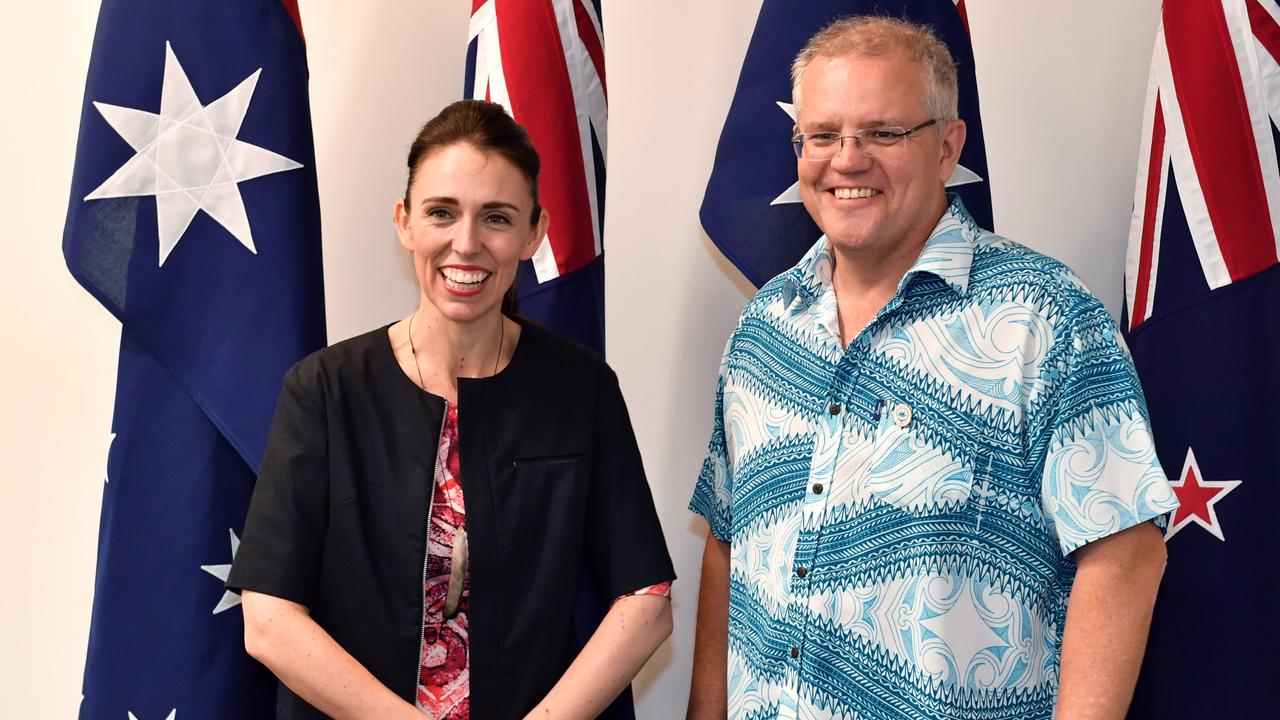
At last the true nature of the Turnbull government is revealed — it has stolen Labor’s popular agenda, it has belatedly become a political animal, it refuses to self-destruct on deficit reduction and its big bet is stronger economic growth.
Scott Morrison’s politics are brazen and aggressive.
• Budget 2017 reaction: Live coverage
Higher taxes are imposed on banks, multinationals and foreigners — a distinct populist lurch.
Public sector-inspired nation building is now a Liberal imperative.
Every Liberal fatal flaw against Labor is turned into a fortress — guaranteeing Medicare, funding the NDIS, seizing the Gonski model.
The tough news is the increase in the Medicare levy across the board but the government judges this is saleable and Senator Nick Xenophon signalled agreement last night.
This is a budget for the times. It seeks to reinvent the Liberal ethos. It aims to repair Turnbull government’s standing and terminate the charmed life of Bill Shorten. It seeks to rekindle an older mainstream liberalism, impose a far more punitive regime on the banks yet cling to its claim of deficit reduction — and that’s a big stretch.
Morrison and Finance Minister Mathias Cormann admit this budget is not their first preference. It is designed for a frustrated nation that refuses to make sacrifices, craves an injection of hope and presided over by a parliament without the steel for fiscal toughness. Morrison called the revenue measures the “Senate tax” for its obstructionism.
The upshot is the Turnbull government will rely more on tax rises than spending restraint in deficit reduction. It is a budget of many levies — increasing the Medicare levy, a new bank levy, a Skilling Australia levy.
It seeks to reassure Middle Australia the worst is over, a risky claim. It seeks to bury the disastrous legacy of the 2014 budget that ruined the Abbott government. It wants the mantle of fiscal responsibility but refuses to be defined by hard fiscal decisions.
Malcolm Turnbull has finally decided what sort of PM he will be — a super pragmatist, unburdened by past orthodoxy, a problem solver and fixer. This budget creates a series of problems for Labor with the potential to change the political equation. The risk for Morrison lies in being too optimistic on the return to steady 3 per cent economic growth, thereby securing the surplus projection by 2020-21 — yet the estimates are defensible.
The three big revenue items are pure Labor heartland. “Cry me a river” was Morrison’s response to the banks’ angst. The banks have misjudged big time. So sweeping are the bank measures a royal commission is pointless. The biggest revenue step, raising $8.2 billion, is the higher Medicare levy, a favourite Labor ploy. With Labor campaigning against foreign workers, the budget imposes foreign worker levies raising $1.2bn.
Morrison is turning Labor’s political successes into revenue gains for the government. This budget concedes the magnitude of Labor’s success and steals its agenda. The “good” and “bad” debt divide sees the budget pledge a $75bn infrastructure fund over 10 years. A new Sydney airport, Snowy 2.0, the Nationals’ Melbourne-to-Brisbane inland rail dream and a new regional growth fund will underpin investment and — have no doubt — the Coalition’s voting base.
New recurrent spending is financed by recurrent spending cuts. The budget has absorbed the $13bn of unlegislated measures from previous budgets. Yet the spending story is more restraint than cuts, neither folly nor heroism. In 2017-18 the spending to GDP ratio is 25.2 per cent falling over four years to just 25 per cent, still above the long-run average.
The message is that government, parliament and public are shunning tough spending decisions — any shortfall will be made up by more taxes or levies, another strong signal from this budget. For 18 months Morrison said the nation had a spending problem but the government’s answer now lies mainly on the tax side, another concession to Labor and public preferences. The government will be attacked on this front but Morrison’s answer is writ large — he wants a budget that works, not a brave budget that fails.
The key to the deficit reduction over the forward estimates is the projection that tax as a portion of GDP will increase from 22.2 per cent in 2017-18 to 23.7 per cent by 2020-21 thus securing the prized golden surplus. The heavy lifting comes on the tax side. Another way of putting it is that total revenue as a portion of GDP must rise over the next four years from 23.5 per cent in the year just ending, to 26 per cent in the “surplus” year. This assumes very strong growth in profits and wages to generate the extra revenue. It also assumes a tax system that delivers big time. Herein lies the central gamble in the entire fiscal strategy.
On housing the government will help first home buyers by offering tax concessions for salary sacrificing into superannuation accounts beyond compulsory contributions. There will be incentives for older people to sell their main residence for special super access. Negative gearing is retained for “mum and dad” but travel deductions for residential investment properties will end, at a hefty saving of $540 million. Foreigners are hit — losing their capital gains tax exemption on homes and facing a foreign investment levy for vacant properties.
There is significant reform design in health, education and welfare. The budget creates a Medicare Guarantee Fund to secure funding of both Medicare and the Pharmaceutical Benefits Scheme into the future. This is designed to deliver transparency in funding costs, unfreeze the Medicare rebate and create a political firewall against the Medicare scare that Shorten ran at the 2016 election.
Health Minister Greg Hunt has waged a strategy of written agreements with stakeholders, the GPs, specialists and pharmacists. The method is to lock in the stakeholders to protect policy changes in the parliament and with the public. Again, it is a dramatic change from the Abbott-Hockey era.
The welfare reforms from Social Services Minister Christian Porter are substantial, based upon three ideas: a radically simplified system of working age payments; a redrafting of the mutual obligation provisions; and a recognition that compliance is defective and demands both support for the vulnerable and tougher penalties for those gaming the system.





To join the conversation, please log in. Don't have an account? Register
Join the conversation, you are commenting as Logout